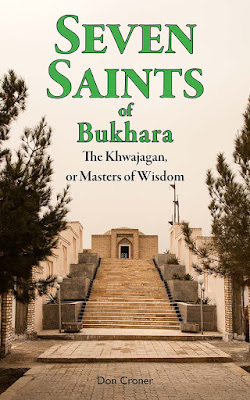Uzbekistan | Bukhara Oasis | Khwajagan | #1 Ghujdawani
According to Shaykh Muhammad Hisham Kabbani:
The designation of the Naqshbandi Golden Chain has changed from century to century. From the time of Abu Bakr as Siddiq [573 CE–634 CE, a companion and father-in-law of Muhammad and the first Muslim Caliph following Muhammad’s death] to the time of Bayazid al-Bistami [804–c.874] it was called as-Siddiqiyya. From the time of Bayazid to the time of Adb al-Khaliq al-Ghujdawani it was called the at-Tayfuriyya. From the time of Adb al-Khaliq al-Ghujdawani to the time of Shah Naqshbandi it was called the Khwajaganiyya. From the time of Naqshband through the time of Ubayd Allah al-Ahrar and Almad Faruqi, it was called Naqshbandiyya . . . And today it is known by the name Naqshbandiyya-Haqqaniyya.
It is the Seven Khwajagan, or Masters of Wisdom, all of whom were born in the Bukhara conurbation, who concern us here. These are:
- Al-Ghujdawani (d.1179)
- Arif ar-Riwakri (d.1219)
- Mahmud al-Injir al-Faghnawi (d. 1315)
- Ali ar-Ramitani (d.1315/1321)
- Muhammad Baba as-Samasi (d.1354)
- Sayyid Amir Kulal (d.1370)
- Muhammad Bahauddin Shah Naqshband (1318–1389)
The Bukhara Khwajagan were buried in the Bukhara Oasis and today their tombs are pilgrimage sites. Ghujdawani was born and buried in the city of Ghujdawan, twenty-seven miles northeast of Bukhara.
Tomb of Ghujdawani with the Ulugh Beg Madrassa behind . . . For more see Seven Saints of Bukhara: The Khwajagan, or Masters of Wisdom.




